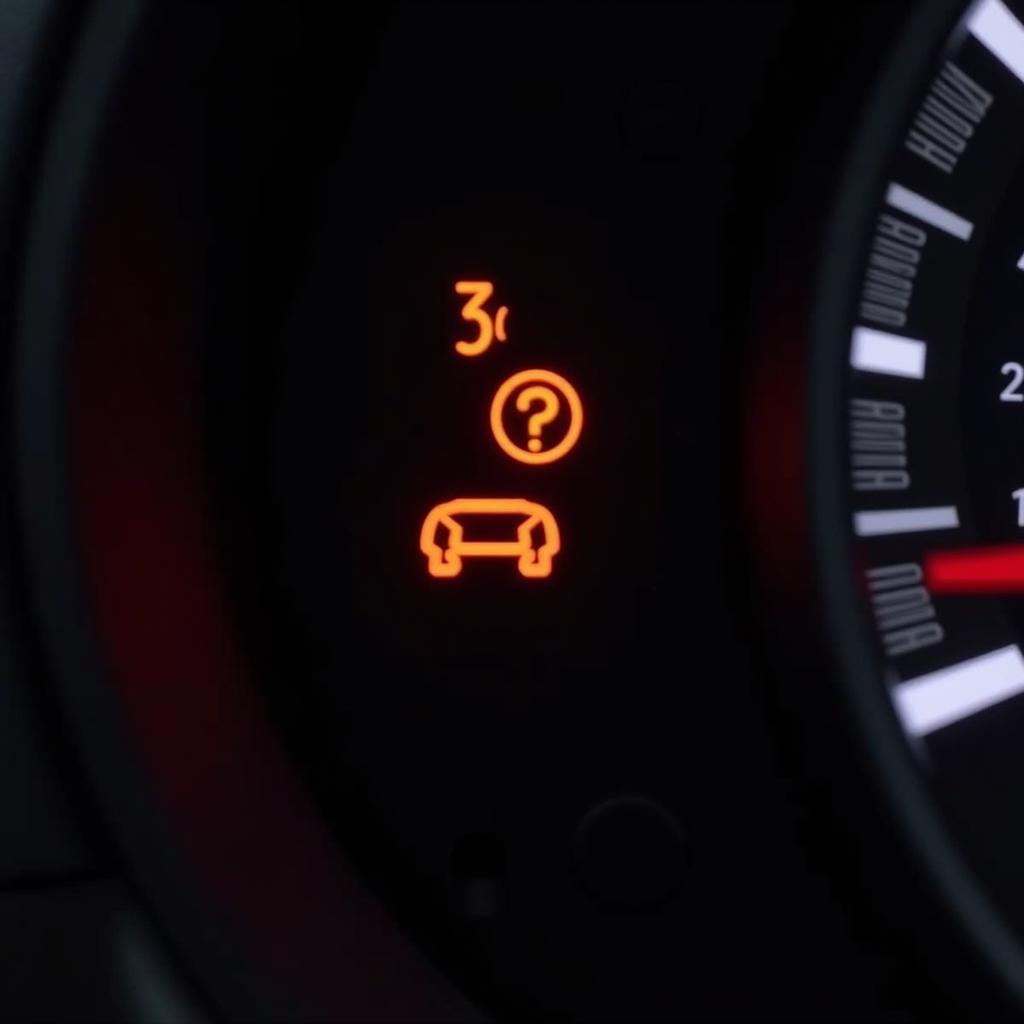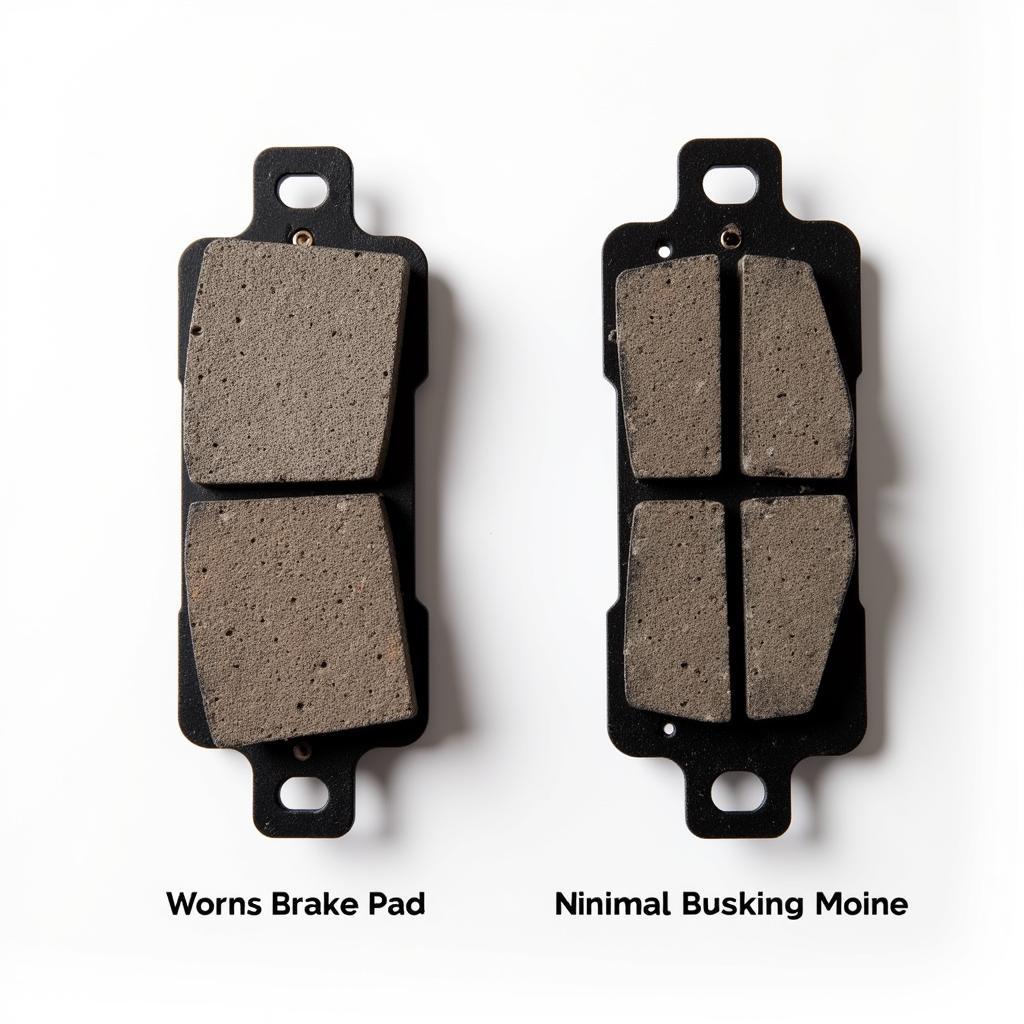The brake pad warning light on your Porsche Cayenne is a crucial safety feature, letting you know when your brake pads are nearing the end of their lifespan. Ignoring this warning light can lead to significantly reduced braking performance, potentially putting you and others at risk. This article will guide you through understanding the brake pad warning light on your Porsche Cayenne and what steps to take when it illuminates.
Understanding Your Porsche Cayenne’s Brake Pad Warning System
Porsche Cayenne vehicles utilize a sophisticated electronic brake pad wear sensor system to monitor the condition of your brake pads. These sensors are strategically located within the brake pads themselves. When the brake pad material wears down to a predetermined level, the sensor comes into contact with the brake rotor, triggering the brake pad warning light on your dashboard.
 Porsche Cayenne brake pad warning light on dashboard
Porsche Cayenne brake pad warning light on dashboard
What to Do When the Brake Pad Warning Light Turns On
Seeing the brake pad warning light on your Porsche Cayenne doesn’t necessarily mean you need to stop driving immediately. However, it does warrant prompt attention. Here’s a breakdown of what to do:
- Assess the Situation: Consider how long the light has been on and your recent driving habits. If the light has just come on and you haven’t noticed any braking issues, you likely have some time to address the issue.
- Schedule an Inspection: Contact your trusted mechanic or Porsche dealership to schedule a brake inspection. This is crucial to determine the remaining life of your brake pads and if any other brake components require attention.
- Avoid Heavy Braking: Until your brake pads are inspected and potentially replaced, try to anticipate stops and avoid heavy braking. This will help minimize further wear on the existing pads.
- Don’t Ignore the Warning: Prolonging brake pad replacement after the warning light illuminates can lead to costly damage to your rotors and other brake components.
 Worn brake pads on a Porsche Cayenne
Worn brake pads on a Porsche Cayenne
Common Questions About Porsche Cayenne Brake Pad Warning Lights
Can I reset the brake pad warning light myself?
While it’s technically possible to reset the brake pad warning light on some Porsche Cayenne models, it’s not recommended without addressing the underlying issue of worn brake pads. If you’re comfortable with basic car maintenance, you can find instructions on resetting the light in your owner’s manual or through online resources like porsche cayenne brake pad warning light reset. However, it’s always best to consult a professional for brake-related concerns.
How long can I drive with the brake pad warning light on?
There’s no definitive answer to how long you can drive with the brake pad warning light illuminated. The remaining lifespan of your brake pads depends on various factors, including your driving style, road conditions, and the quality of the pads themselves.
“Ignoring the brake pad warning light is like playing Russian roulette with your safety,” says Master Technician, Markus Kohler. “Even if your brakes feel fine, the sensors are there for a reason. Get them checked immediately to avoid any potential risks.”
Why is my brake pad warning light on after a brake pad replacement?
If your brake pad warning light remains illuminated after a brake pad replacement, it’s possible the brake pad wear sensors weren’t properly reset or replaced during the service. It could also indicate a faulty sensor or an issue with the wiring.
Prioritizing Your Safety
Addressing the brake pad warning light on your Porsche Cayenne is essential for maintaining optimal braking performance and ensuring your safety on the road. By understanding the warning system and taking prompt action, you can confidently tackle this routine maintenance task and enjoy peace of mind behind the wheel. Remember, when it comes to brakes, it’s always better to err on the side of caution and consult a trusted professional.


